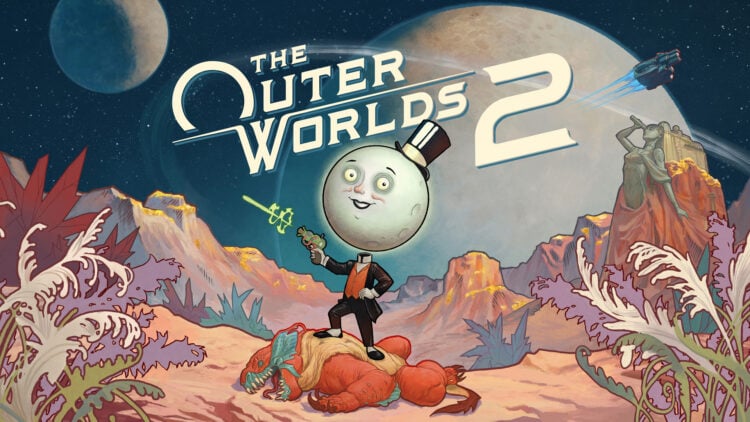According to the developers at Obsidian Entertainment, The Outer Worlds 2 is a significantly more mature release compared to the first instalment. That means it’s a much bigger RPG, increased in terms of scope, story, planets, and more. With all that said and all the marketing thrown at it in recent months and weeks, I was more than happy to hop on the hype train.
The significant consternation for first-time players, like myself, was whether you’d need to know and understand any of the story from the first game before proceeding to the second. The short answer is “no”, you don’t. While the events still take place in the same universe and it’s not a completely isolated title, those looking to jump straight in should face no qualms in doing so. However, for fans of the first iteration, there’s a lot promised in terms of staying true to the original while providing a lot more to enjoy. Does it live up to both of these expectations?
The Multiverse Awaits
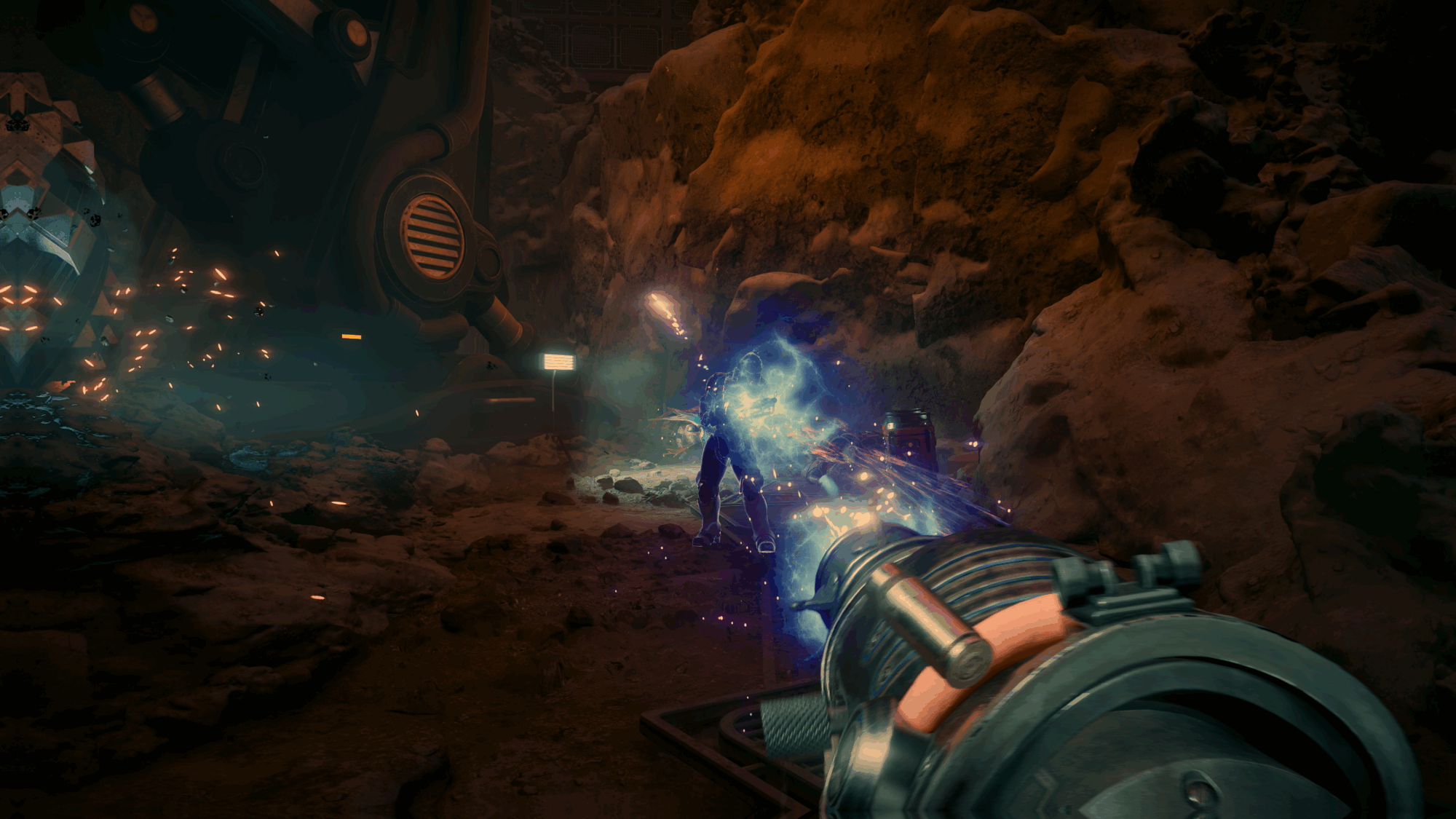
While it isn’t technically a multiverse saga, the baseline story of The Outer Worlds does take place in a universe different to ours. That is, because the timeline differs, an alternative future presents itself as a diverged history from our own. All the way back in the year 1901, then US President William McKinley wasn’t assassinated. This event, or rather, the non-event, meant that Teddy Roosevelt never assumed the presidency. As it were, this also meant that Roosevelt’s established policies, such as the early anti-trust laws and the commencement of progressive stances, never came into effect. Unfortunately, this meant there were no checks and balances for the perpetual growth of major corporations, leading to a “hyper-corporate, class-centric society dominated by the powerful megacorporations.”
This is the underlying synopsis of the game’s state of affairs, but it doesn’t fully explain the actual story. The events of The Outer Worlds 2 take place in a wealthy, yet isolated, colony of Arcadia. Here, you, as the supposed protagonist working for the Earth Directorate, are on a mission coordinating between Earth and all of its colonies. You’re sent to Arcadia to investigate a rising issue: rifts have been appearing in the fabric of space and time, cutting off communication between the colonies and Earth.
Having arrived in the region, while still in space, you’re brought up to speed on the growing tensions between the Protectorate, a capitalist government that holds the monopoly on faster-than-light travel, and a group known as Auntie’s Choice. Auntie’s Choice is one of the megacorporations we discussed, having merged from a large pharmaceutical company, Auntie Cleo’s, and a consumer goods manufacturer, Spacer’s Choice. Auntie’s Choice has invaded Arcadia to disrupt the Protectorate, looking to seize control of the rifts and the trade routes between the colonies. All for the profit, of course.
Very early on, however, you’re duped into buying some of the stories being sold, thanks to your do-good abandon. After learning of the harsh realities of not trusting anyone, you set out on a mission of revenge. It seems pretty straightforward from that perspective, a story as old as time. However, your eagerness to follow the breadcrumbs of the trail puts you smack-bang in the middle of the ongoing conflict between the Protectorate and Auntie’s Choice.
A Burden of Choice
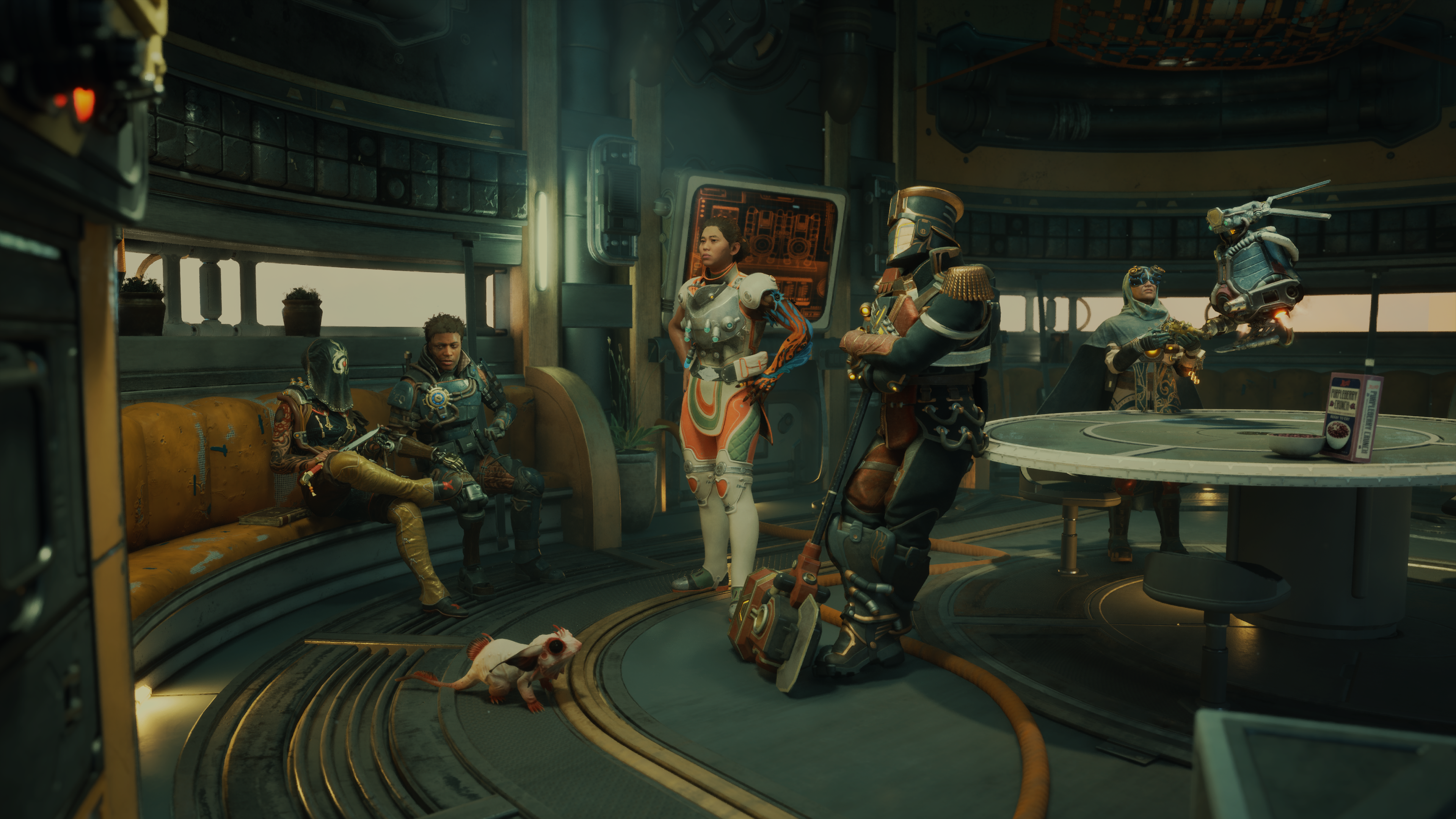
Typically, as the majority – I’d hope – tend to assume the reasonable position of wanting to do good and side with the good guys to achieve the end goal. In The Outer Worlds 2, however, the lines are extremely blurry. Are there really any good guys? With each of the factions looking to capitalise on the various technologies to establish their dominance, and you aim to reach your target to seek righteous retribution, you’re left having to rely on both sides to piece together the required clues.
Be forewarned, though, your choices have a significant impact. Choosing one side may lead to the death of innocent individuals on the other. Additionally, some missions may also result in someone being executed for crimes they may not have even committed. To drive the point even further, all of these choices within said missions will also have an impact on your companions, whom you choose to join you and can be switched out, each with specific traits and abilities to aid your cause. With too many “incorrect “choices that upset one or more of your companions, you’ll have a full-blown mutiny on your hands, no longer just battling all the “baddies.”
While the concept isn’t new, with plenty of games with decision trees resulting in fallouts with your companions, I did enjoy how loyalty to each morality standard produced a different set of results. Players can choose to complete side quests with their companions before leaving an area, which is sometimes prompted when boarding your ship to proceed with your set mission. If you’re in a rush to the end, these decisions are remembered by them, which may put you in their bad graces.
There are several indicators before things go completely off the rails, however. With dialogue points along the lines of “are you seriously going to do that?”, an almost glaring foreboding that there is something at stake here. At the end of the day, nothing is as straightforward as you’d think and taking everything at face value may be your downfall.
Further to this, there are multiple ways to skin a cat when it comes to completing missions. You may think that doing X leads to Y, but by the time you’ve reached the end and decisions need to be made, there was a much more presentable approach to having gone about it. I did find myself scrutinising my decisions by the end of each, playing back whether it was the correct Choice in the end.
Gameplay, Graphics and More
The gameplay of The Outer Worlds 2 is your typical RPG title. Users can choose between first and third-person perspectives while running around gathering weapons, ammo for them, as well as resources like food and drink, and scrap to tinker with crafting.
In the early game, I had no issues finding any of the above-mentioned items, running around with abandon, and blasting enemies and creatures that often attacked on the side of the road. You soon realise that resources, while always available, do have a cost to them. You’re left having to manage between the resources and scrap you find along your journey, using them to craft or sell them to buy better weapons, more ammunition or even more resources to craft more resources. At some intervals, this can become monotonous, especially if you’ve not been miserly with your resources to begin with.
Other aspects of the game bring up the topic of Choice yet again. That’s your skill tree and other power-ups. As with most similar games, players get to decide how to upgrade their character’s ability and skills, each giving improved stats for specific traits, like improved damage when using guns, running faster or being able to sneak in and out of secure areas without being caught as easily. In the early game, this also affects the story. Not being able to break the lock in one area to reveal a key piece of evidence on another mission later on. Similarly, not being able to hack a computer that requires a higher level of skill can be the difference between a group of people dying. And there’s not a perfect build here either. Choosing which to unlock first and to what level will definitely have a lasting impact on the story.
The general gameplay is smooth with plenty of gimmicks at your disposal. Gunplay is nicely crafted and very little in the way of oddities with defective aiming and the like. There are plenty of weapon types to traverse, with four of five main groups with their own ammo types, and even more sub-categories, including that of melee weaponry.
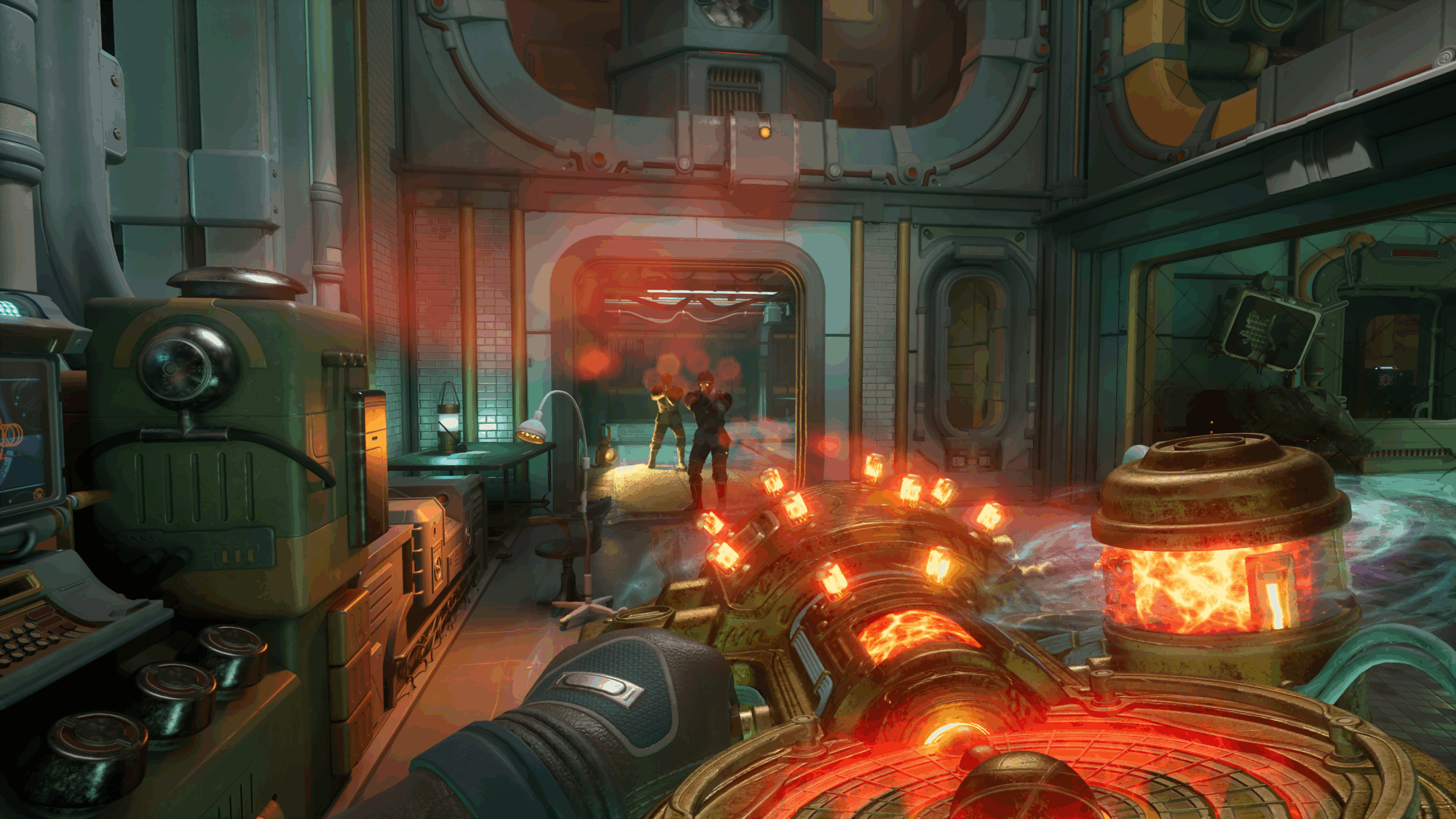
The game features numerous quirky and comedic elements. From the brilliant dialogue that flows naturally from the various points you’re able to select from, and even the intro scene as the game loads. You, too, can throw in some commentary to break the tension or attempt to be witty, which may not always be well received by those in the conversation. Time and place, I guess.
While the dialogue may be good, it’s also where I picked up most of the bugs. Oftentimes, you’re in the middle of a conversation, and a random NPC will walk by with a few snide remarks and automatically becomes the main emphasis, drowning out the crucial talking points from the main characters. This also sometimes happens when you’re in the middle of a gunfight, where you can detect the direction of the gunfire, or in a quieter environment, such as listening to footsteps. Then, out of nowhere, there are loud noises or voices from some of the other NPCs around, which completely screws up the sound.
While the worlds are large and generally well-built, they also produce their own specific set of bugs. Albeit we’re still in the pre-release version with a potential ‘Day 1’ update available, there were a few janky moments scattered across my playthrough. There are also pleasant surroundings, foliage, and sunsets to enjoy along the way.
Although not a bug, I did find an issue with the design of the on-screen map. It may present some topological lines, but they mean almost nothing. Navigating certain areas of the map requires a lot of trial and error, and sometimes brute force. While most RPG titles with large maps are often greyed out until explored, players usually build up the completeness as they travel around, noting important aspects like mountains and passes where they can and cannot traverse. You don’t get that with The Outer Worlds 2, much to my frustration. Yes, the map becomes more visualised the more you explore, adding key Fast-Travel points, but it doesn’t provide the greater detail you need to navigate to the areas you’re supposed to reach, sometimes requiring you to try three or four routes before finding the right path.
It’s Seriously Not Serious
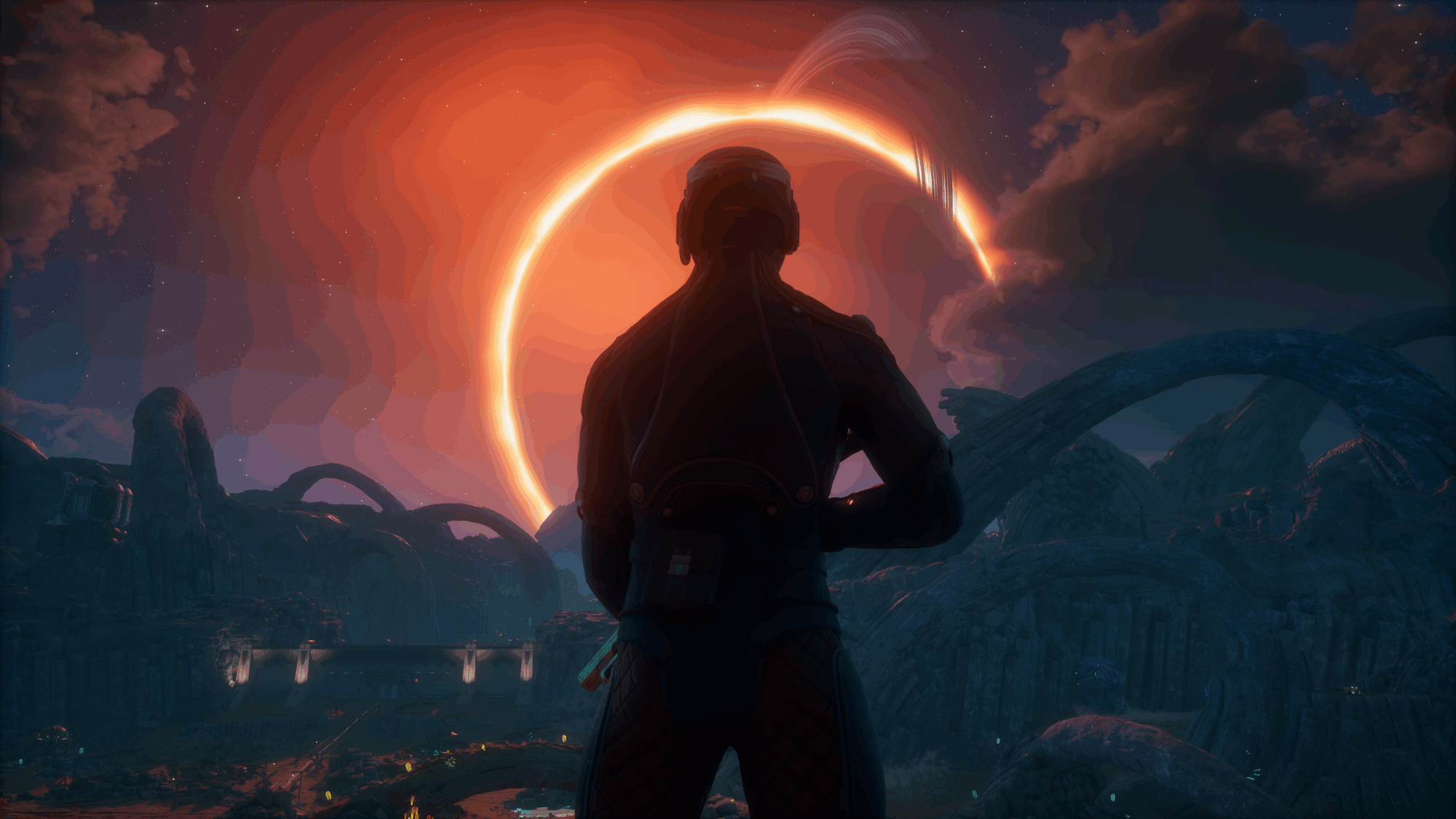
Many RPG titles tend to take themselves very seriously. I could compare The Outer Worlds 2 to games like Starfield, which share similar dynamics, but it wouldn’t do them justice. The former, while all grown up now with a much larger game to explore, keeps things light-hearted, even in the most inopportune of times. Yes, it’s a serious title, one that requires a serious investment, but you’re still here for a good time.
There’s plenty to enjoy about the game, with new worlds to explore, each with its own unique challenges. The main story is one of intrigue that will keep you locked in for hours, especially if you’re left at odds, choosing alternative paths to get the job done. Be cautious about whom you trust and don’t upset anyone too much before they turn against you.
I really enjoyed The Outer Worlds 2, and with so much more to still be done, I may still be enjoying it for weeks to come. The game is available on PS5, Xbox and Windows PC, and will also release on Game Pass on day one.
RELATED: Ninja Gaiden 4 Game Review – A Redemption Story for the Franchise
The Review
Outer Worlds 2
Outer Worlds 2 is a complex title, where the player must choose the right path between conflicting groups to complete their own mission. Each decision has significant ramifications for those around you, where innocent people may die as a result of poor decision-making. Be that as it may, the game is fun, with plenty of comical dialogue to enjoy throughout.
PROS
- Actions have consequences
- Many large environments to explore
- Great fun and plenty of comedic elements
- Hours of additional side quests and alternative options to explore
- Available on Game Pass
CONS
- Sound is buggy
- Unlocking new planets is a bit linear

